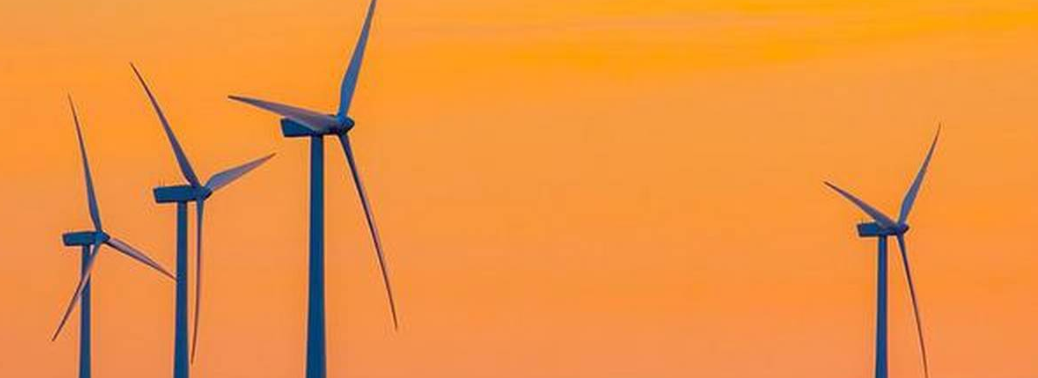Wind loses energy as policy paralysis blows through this renewable sector
11, Mar 2019

From a euphoric 5,500 MW in 2016-17 when wind energy companies rushed to commission their projects so as to get their foot in before certain incentives expired capacity additions have plummeted, to 1,762 MW in 2017-18 and an estimated 1,600 MW in 2018-19.
Notably, at the beginning of both the years, expectations were high. After 2016-17 ended with 5,500 MW, an ecstatic industry predicted 6,000 MW for 2017-18. That didn’t happen, but still, many projected a boom for 2018-19. Now, when the record is dismal again, predicting record high installations in 2019-20, while others (such as market research company Crisil) are not so optimistic.
The situation would have been very different if only policymakers had thought things through and the government had been more helpful. But first, some background.
Unlike solar, wind power plants cannot be put up anywhere but only in locations where winds blow strong. In India, there are eight States where it is economically viable to put up wind turbines Tamil Nadu, Gujarat, Karnataka, Maharashtra, Madhya Pradesh, Rajasthan, Telangana and Andhra Pradesh.
For about two decades, wind energy firms (called ‘developers’) would erect the turbines at chosen sites and sell power to the electricity supply companies at prices fixed (called ‘feed-in tariffs, or FiT) by the respective State electricity regulators. The developer would get the FiT for the entire power purchase agreement period, typically 25 years.
Because only eight States constituted the ‘market’, annual fresh capacity installations used to be in the 1,500 MW — 3,000 MW corridor. Expanding the market meant that the other States also should buy wind power. This could not happen because of difficulties in putting up projects in one State and selling the electricity to another.
Centre steps in
That was when the Centre stepped in. As soon as the BJP came to power in 2014, it fixed a target of 1,75,000 MW of capacity for renewable energy of which 1,00,000 MW would be solar, 60,000 MW wind and the rest biomass and small hydro.
To make the 60,000 MW happen, the Government of India (through its new company, SECI), became a trader — it would buy power from the developers and sell it to the non-windy States, thus expanding the market. Developers who offered to sell at the least prices would get to sign long-term power purchase agreements; they could put up their projects anywhere, but should deliver the power at a substation. Thus began the epochal shift from fixed FiTs to market-determined tariffs.
The first round of auctions closed in February 2017. Due to competition, developers offered to sell electricity at prices as low as 3.46 a kWhr; in contrast, the least FiT was 4.16 in Tamil Nadu. Now, upon seeing prices fall so low, the windy States began to ask themselves, why should we buy power at the costly FiT prices; why not we also conduct our own auctions to buy cheaper power? But they didn’t know the mechanics of the auctions and had to wait for some guidelines from the central electricity regulator. As they dithered, the ‘windy State market’ vanished. But the Centre too dragged its feet on further rounds of auctions. In 2017-18, just two auctions, for 2,000 MW, happened. The year ended on a dismal note.
In due course, activity picked up and till now, six rounds of SECI’s, and several more of different States have happened and about 13,000 MW of capacity have been awarded. Prices dropped consistently, and fell to a low of 2.44 in the third round.
At this stage, two other problems arose. First, to be viable at such low prices, developers flocked to the two windiest States — Gujarat and Tamil Nadu.
All of the SECI-awarded projects (70% of all auctioned capacities) went to them, which was more than the ability of the substations to take the power.
Second, Gujarat frowned at 5,400 MW worth of projects coming up on its soil but all the power going to the non-windy States. Would there be any lands left for its own auctions? So, it refused to give land and came out with a policy that forced developers to put up their projects in specified ‘wind parks.’ Since the parks are not necessarily the best sites for wind projects, the developers didn’t like the policy. Negotiations began, project work got delayed.
The Obstacles
As the best sites got taken, prices began to rise after from the fourth SECI round. Governments, suspecting a developers’ cartel, began imposing tariff caps — or the highest price they would accept. And they began cancelling auctions at ripe stages. Notably, the benefits of the low tariffs have never been passed on to the consumer — the electricity supply companies have pocketed the benefits.
The industry has been asking the government to do ‘substation-wise auctions’, (what is the cheapest best price you can offer if your wind turbines would be connected to this particular substation?) The government is hesitating, apparently because substation-wise auctions will result in higher price quotes.
Of the 13,000-odd MW tendered, the deadline for completion has expired for 2,000 MW; but so far only 823 MW has come up. More auctions are set to happen. So, the question is, while there is a fat backlog and a healthy ‘order pipeline,’ will the projects come up? Mr. Tanti believes they will and says 2019-20 will see a record of 8 GW; Crisil disagrees — it projects 3,800 MW for the year. The worst sufferers in the mess are the 4,000 SMEs who supply components to turbine manufacturers and their two million employees.






